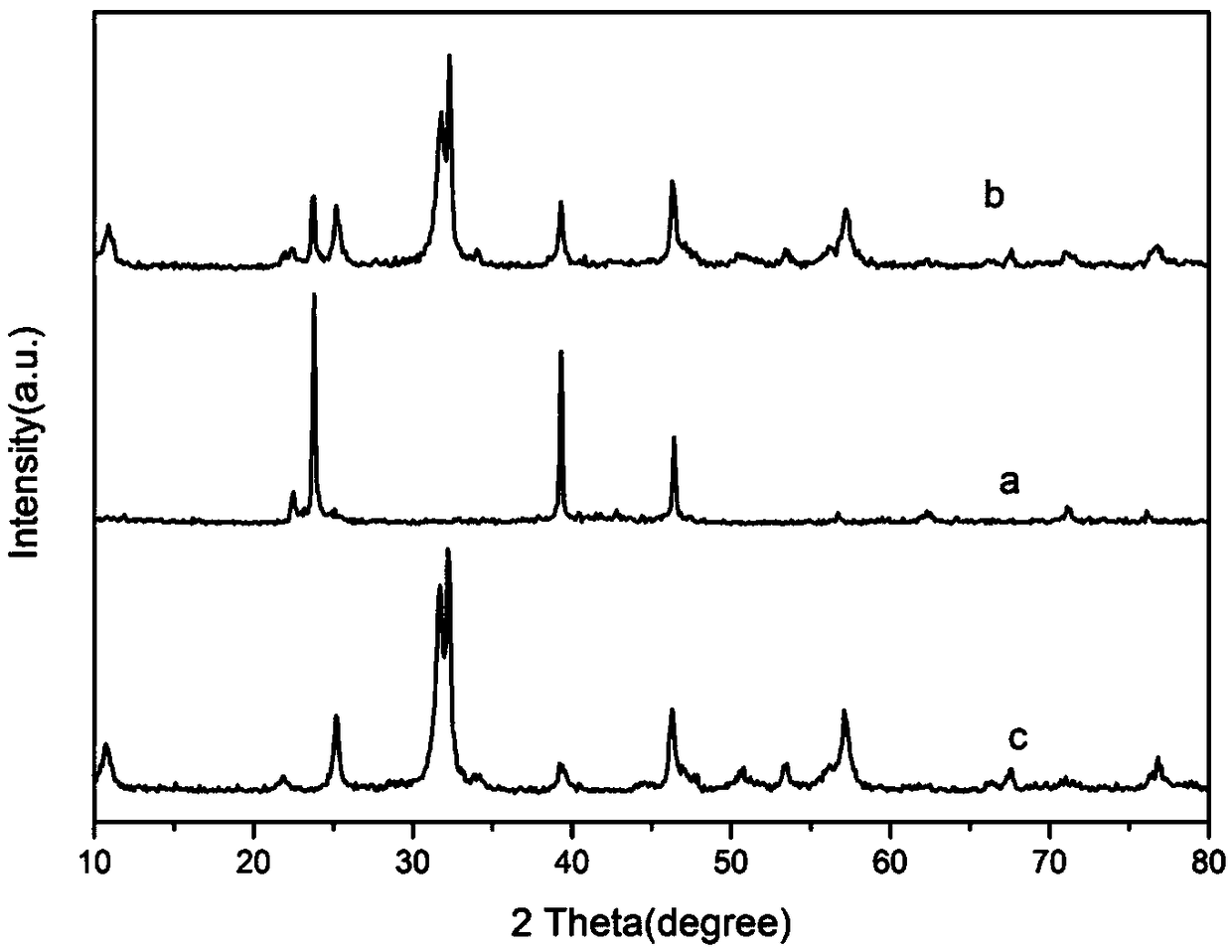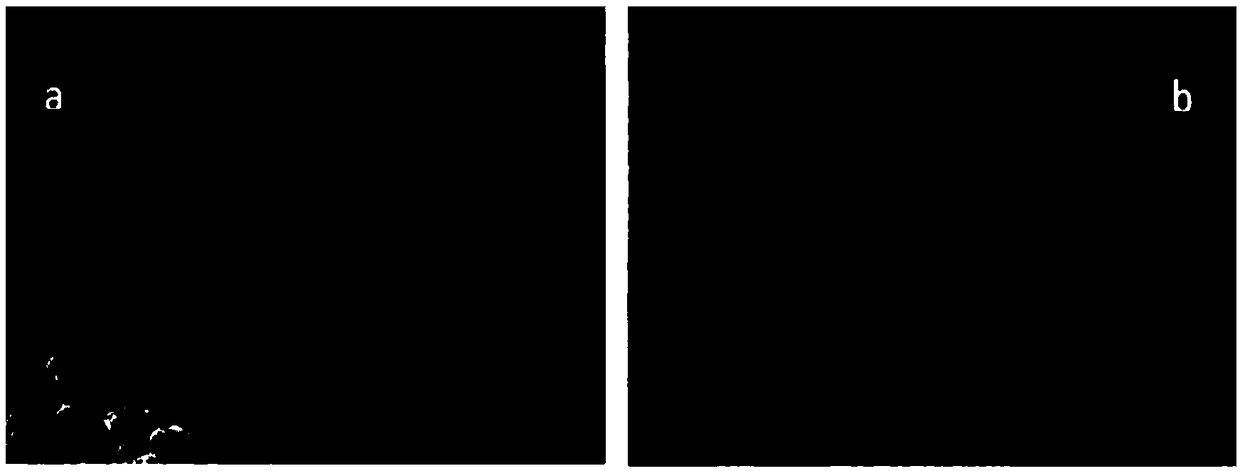Preparation method and application of silver iodide/bismuth oxybromide heterojunction photocatalyst
A photocatalyst and heterojunction technology, applied in the direction of physical/chemical process catalysts, chemical instruments and methods, chemical/physical processes, etc., can solve the problems of high excitation energy, low photocatalytic activity, anesthesia, etc., and achieve saving The effect of synthesis cost, cheap and easy-to-obtain raw materials, and effective control of morphology
- Summary
- Abstract
- Description
- Claims
- Application Information
AI Technical Summary
Problems solved by technology
Method used
Image
Examples
Embodiment 1
[0048] (1) Dissolve 2 mmol of bismuth salt in 30 ml of ethylene glycol and stir magnetically for 30 min at room temperature;
[0049] (2) Dissolve 2 mmol of bromine source in 30 ml of ethylene glycol, stir magnetically at room temperature for 10 min, add dropwise to the above solution, and continue stirring for 1 h;
[0050] (3) Transfer the above mixed solution to a reaction kettle, put it in an oven at 145°C for 18 h, and obtain a milky white solid;
[0051] (4) The milky white solid was separated by centrifugation, washed three times with deionized water and absolute ethanol respectively, and dried in an oven at 60°C;
[0052] (5) Take out the dried solid and grind it with an agate mortar to obtain dry BiOBr powder;
[0053] (6) Dissolve 2 mmol of silver salt in 40 ml of deionized water and stir at room temperature for 15 min;
[0054] (7) Add the prepared BiOBr powder into the above solution and continue stirring for 15 min;
[0055] (8) Add 2 mmol iodine source dropwis...
Embodiment 2
[0059] (1) Dissolve 2 mmol of bismuth salt in 30 ml of ethylene glycol and stir magnetically for 30 min at room temperature;
[0060] (2) Dissolve 2 mmol of bromine source in 30 ml of ethylene glycol, stir magnetically at room temperature for 10 min, add dropwise to the above solution, and continue stirring for 1 h;
[0061] (3) Transfer the above mixed solution to a reaction kettle, put it in an oven at 125°C for 18 h, and obtain a milky white solid;
[0062] (4) The milky white solid was separated by centrifugation, washed three times with deionized water and absolute ethanol respectively, and dried in an oven at 60°C;
[0063] (5) Take out the dried solid and grind it with an agate mortar to obtain dry BiOBr powder;
[0064] (6) Dissolve 2 mmol of silver salt in 40 ml of deionized water and stir at room temperature for 15 min;
[0065] (7) Add the prepared BiOBr powder into the above solution and continue stirring for 15 min;
[0066] (8) Add 2 mmol iodine source dropwis...
Embodiment 3
[0070] (1) Dissolve 2 mmol of bismuth salt in 30 ml of ethylene glycol and stir magnetically for 30 min at room temperature;
[0071] (2) Dissolve 2 mmol of bromine source in 30 ml of ethylene glycol, stir magnetically at room temperature for 10 min, add dropwise to the above solution, and continue stirring for 1 h;
[0072] (3) Transfer the above mixed solution to a reaction kettle, put it in an oven at 165°C and react for 18 hours to obtain a milky white solid;
[0073] (4) The milky white solid was separated by centrifugation, washed three times with deionized water and absolute ethanol respectively, and dried in an oven at 60°C;
[0074] (5) Take out the dried solid and grind it with an agate mortar to obtain dry BiOBr powder;
[0075] (6) Dissolve 2 mmol of silver salt in 40 ml of deionized water and stir at room temperature for 15 min;
[0076] (7) Add the prepared BiOBr powder into the above solution and continue stirring for 15 min;
[0077] (8) Add 2 mmol iodine so...
PUM
 Login to View More
Login to View More Abstract
Description
Claims
Application Information
 Login to View More
Login to View More - R&D
- Intellectual Property
- Life Sciences
- Materials
- Tech Scout
- Unparalleled Data Quality
- Higher Quality Content
- 60% Fewer Hallucinations
Browse by: Latest US Patents, China's latest patents, Technical Efficacy Thesaurus, Application Domain, Technology Topic, Popular Technical Reports.
© 2025 PatSnap. All rights reserved.Legal|Privacy policy|Modern Slavery Act Transparency Statement|Sitemap|About US| Contact US: help@patsnap.com



